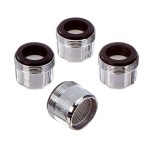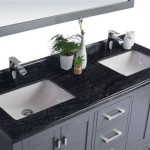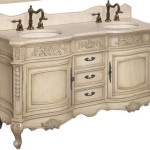How to Remodel Bathroom Countertops
A bathroom remodel can be a significant investment, but it is also a great opportunity to create a spa-like oasis in your home. One of the most important elements of a bathroom is the countertop. It serves as the centerpiece of the vanity and sets the tone for the entire space. If your bathroom countertops are outdated, damaged, or simply not to your liking, remodeling them can make a big difference in the overall appeal and functionality of your bathroom.
Remodeling bathroom countertops can be a daunting task, but with the right planning and execution, it can be a manageable and rewarding project. This article will guide you through the process, providing step-by-step instructions and tips for a successful remodel.
Step 1: Planning and Preparation
Before diving into the actual remodeling, it's crucial to plan and prepare thoroughly. Start by defining your budget, desired style, and material preferences. Consider the existing layout of your bathroom and whether you want to make any structural changes. Research different countertop materials, their properties, and cost considerations. You can consult with professionals like contractors or interior designers for advice and recommendations.
Once you have a clear vision, it's time to prepare the work area. Clear out all items from your vanity, including sinks and faucets. Protect the floor and surrounding areas with drop cloths. Disconnect the water supply to the sink and remove the old countertop. Ensure the area is clean and free of debris before you begin installation.
Step 2: Choosing the Right Material
Bathroom countertops come in a vast array of materials, each with its own pros and cons. Here are some popular options to consider:
- Granite: Known for its durability, scratch resistance, and elegant appearance, granite is a premium choice. It comes in various colors and patterns, making it suitable for different styles.
- Marble: A luxurious material with a timeless appeal, marble boasts a unique veining pattern. However, it's more porous than granite and requires regular sealing.
- Quartz: Engineered stone made from crushed quartz and resin, quartz is highly durable, non-porous, and available in a wide range of colors and designs.
- Laminate: A budget-friendly option, laminate offers a variety of styles and patterns to mimic natural stone. It's relatively easy to install and maintain but may not be as durable as other options.
- Solid Surface: Composed of acrylic or polyester resins, solid surface countertops are seamless, non-porous, and easy to repair. They are available in various colors and can be customized with integrated sinks.
Consider your budget, style preferences, and the amount of maintenance you are willing to do when selecting the material. Consulting with a professional can help you finalize your decision.
Step 3: Installation
The countertop installation process depends on the specific material you choose. For materials like granite, marble, and quartz, it's often recommended to hire a professional installer. They have the expertise and tools to ensure a proper and safe installation. However, some materials, such as laminate, can be installed by homeowners with some DIY skills.
Here's a general overview of the installation process:
- Prepare the base: Ensure the underlying support is solid and level. If necessary, use shims to adjust the base for a stable countertop installation.
- Cut and shape the countertop: Use a template or measure carefully to mark the countertop for cutting. Cut the countertop using specific tools for each material, such as a bridge saw for granite or a jigsaw for laminate.
- Apply adhesive: Apply a suitable adhesive to the base and the underside of the countertop. Securely place the countertop in position and ensure it's level.
- Install the sink: Cut the countertop for the sink cutout and securely install the sink using the manufacturer's instructions.
- Finish the edges: If necessary, apply edge molding or trim to finish the edges of the countertop.
Remember to wear safety glasses and gloves during the installation process. Refer to specific instructions for each material and ensure proper ventilation during cutting, sanding, or using adhesives.
Step 4: Final Touches
Once the countertop is installed, it's time to add the final touches. Install the faucet, hardware, and any other accessories. Clean the countertop thoroughly to remove any dirt or debris from the installation process.
Consider sealing the countertop, especially if you've chosen a porous material like marble. Sealing protects the surface from stains and helps maintain its appearance.
Enjoy your newly remodeled bathroom countertops. They will enhance the functionality and aesthetics of your bathroom, creating a more inviting and enjoyable space.

Paint Bathroom Vanity Countertop Sink So Easy A Piece Of Rainbow
:strip_icc()/101963997-428f882f0c604f7cb5e07f81516e96d9.jpg?strip=all)
18 Luxurious Bathroom Countertop Ideas For All Budgets

Bathroom Remodel Choosing A Counter Top Material Wd Smith

7 Types Of Countertops For Bathrooms

Paint Bathroom Vanity Countertop Sink So Easy A Piece Of Rainbow

Our Diy Bathroom Remodel On A Budget 13 Inexpensive Ideas

The Pros And Cons Of Popular Bathroom Countertop Materials

Diy Vanity Tops For Your Bathroom

Master Bathroom Remodel Part 8 How To Install New Tile Counter Tops Simply Designing With Ashley

Tile Bathroom Countertops
Related Posts







